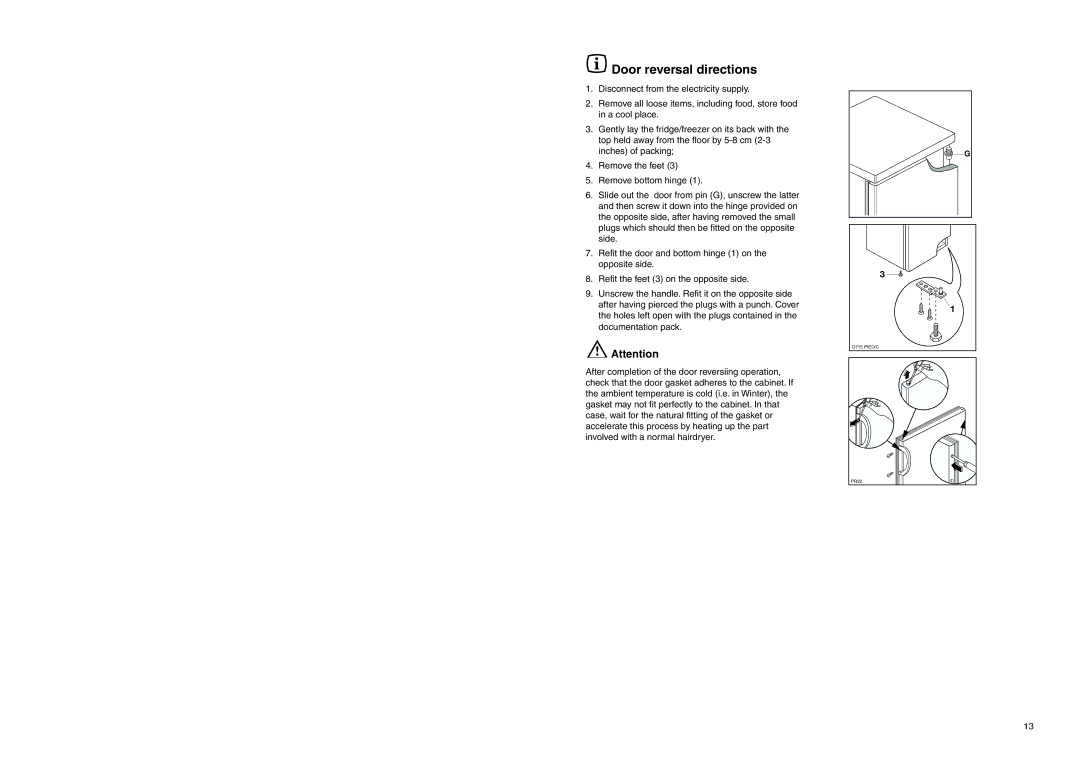ER 7620/1 C specifications
The Electrolux ER 7620/1 C is a pinnacle of modern refrigeration technology, designed to meet the diverse needs of households while promoting energy efficiency and superior food preservation. This intelligently crafted refrigerator brings together functionality, style, and the latest innovations that make it a standout choice in any kitchen.One of the main features of the Electrolux ER 7620/1 C is its impressive storage capacity. With multiple shelves and drawers, users can store ample groceries, and the flexible layout allows for easy organization of both large and small items. The refrigerator includes adjustable shelves that can cater to various heights, making it convenient to store taller bottles or larger food containers.
Energy efficiency is a critical characteristic of the ER 7620/1 C. It boasts a high energy rating, designed to consume less electricity while maintaining optimal cooling performance. This feature not only saves on utility bills but also minimizes the environmental footprint, aligning with sustainable living practices that many consumers are adopting today.
The cooling system of the Electrolux ER 7620/1 C is designed with advanced technologies that ensure even temperature distribution throughout the refrigerator compartment. This function helps to prevent temperature fluctuations, which can lead to food spoilage. With features like DynamicAir, the refrigerator maintains constant temperatures and humidity levels, creating an ideal environment for food storage.
Another noteworthy technology is the FrostFree function. This innovative feature eliminates the need for manual defrosting by preventing ice build-up, which can consume valuable storage space and hinder airflow. The ER 7620/1 C significantly reduces maintenance efforts, allowing users to focus on enjoying their fresh and frozen items without worry.
In terms of design, the Electrolux ER 7620/1 C showcases an elegant and contemporary aesthetic. The sleek stainless steel finish lends a modern touch to any kitchen décor, while the user-friendly interface with intuitive controls makes it easy to adjust settings.
Additionally, the appliance is equipped with versatile storage solutions, including spacious vegetable drawers that keep fruits and vegetables fresh longer, and dedicated compartments for dairy products. The door design also offers convenient shelving for frequently used items, ensuring easy access.
In conclusion, the Electrolux ER 7620/1 C is a well-rounded refrigerator that harmonizes efficiency, advanced technology, and a stylish design. With its extensive storage features, energy-saving technologies, and functionality, it is an excellent choice for those seeking both practicality and modern elegance in their kitchen.

